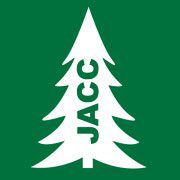|
Which type of door should you specify? Select the door type that best fits your project needs by using this helpful guide.
Sectional Garage Doors
Commercial sectional garage doors are appropriate when
thermal efficiency is a concern, where window space is desired for light
or visibility, or simply for aesthetic reasons. Sectional doors also operate
quietly and generate little noise in windy applications. They require
significant backroom or headroom, depending on the application. This product
family includes thermal, ribbed, rail and stile, and raised panel doors.
Rolling Doors
Commercial rolling doors are appropriate in demanding environments requiring maximum durability and security. Because of minimal backroom, headroom and sideroom requirements, rolling doors are able to fit in tight spaces not appropriate for sectional doors.
Constructed of interlocking slats that wind around a barrel, the rolling door family includes service doors and counter shutters.
Security grilles also fit into this category.
Fire Doors
Featuring some of the same construction characteristics as rolling doors, commercial fire doors are specified in facilities that require a listed fire door in a rated fire wall.
Fire doors are normally provided with fusible links that automatically release to close the door at 165 F.
Smoke and heat detectors or a building's alarm system can also trigger the door's descent.
The fire door family includes both service doors and counter shutters.
Traffic Doors
Similar in construction to a rolling service door, traffic doors feature a high-strength fabric, rather than a metal, curtain. This allows for doors to achieve faster speeds when traveling, which make them ideal for high cycle applications.
Also, if contact is made with the door forcing it out of its guides, it is easily replaced without a service call.
|
 |
 |
 |
|
|
||||||||||||||||||||||||||||||||||||

